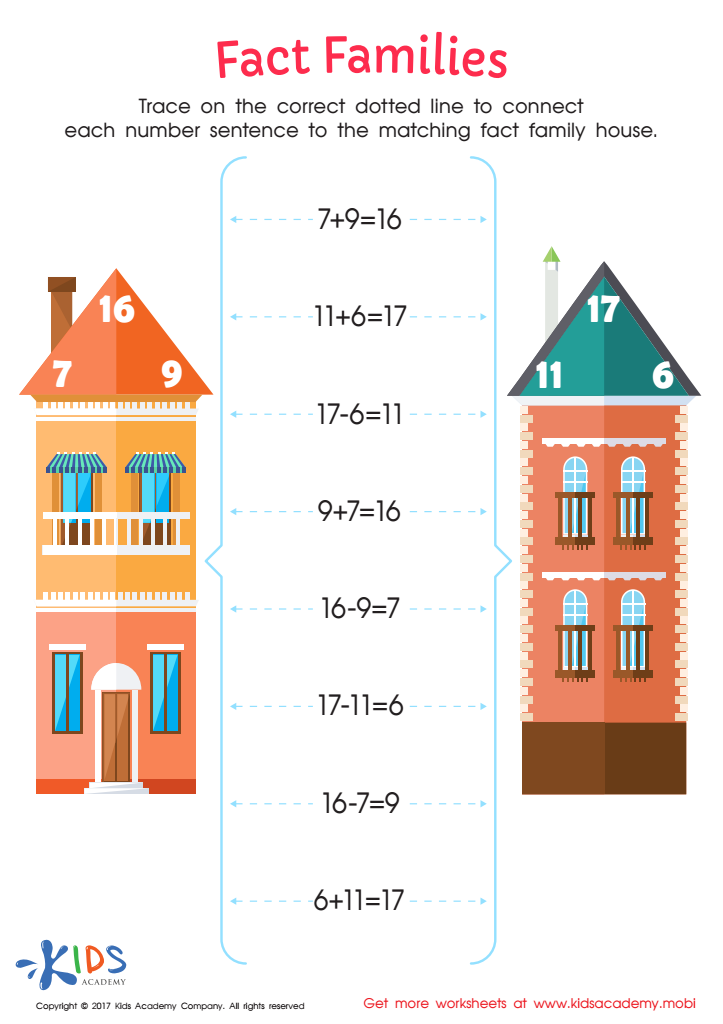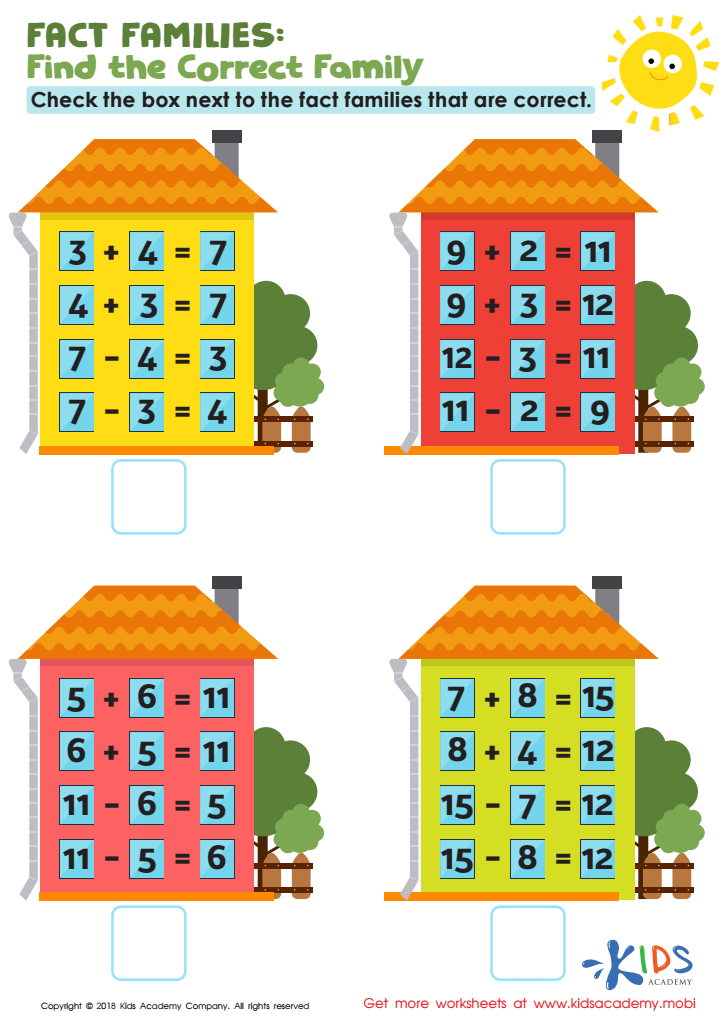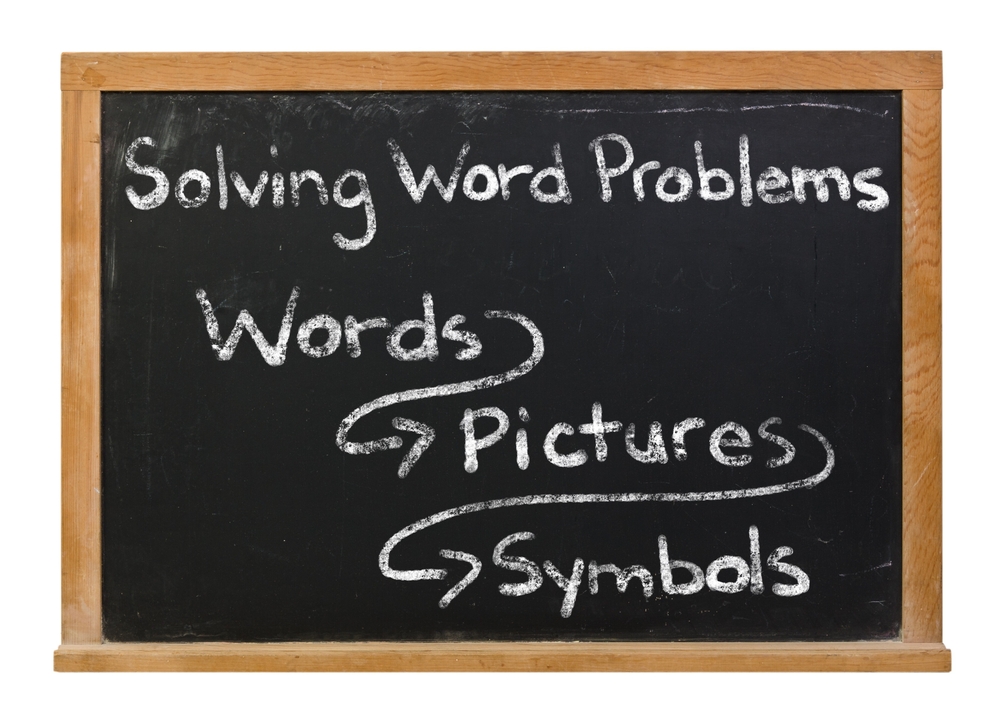Understanding fact families Normal Addition & Subtraction Worksheets for Ages 5-9
3 filtered results
-
From - To
Unlock your child's mathematical potential with our "Understanding Fact Families: Normal Addition & Subtraction Worksheets for Ages 5-9." These expertly crafted worksheets are designed to reinforce the relationship between addition and subtraction. Perfect for young learners, our engaging activities help children recognize and create fact families with ease. By mastering these foundational concepts, students build a deeper understanding of math principles and boost their problem-solving skills. Each worksheet offers a fun and interactive way for kids to practice and succeed, making math both enjoyable and educational. Explore our collection and watch your child's confidence in math soar!


Fact Families — Add and Subtract Worksheet


Fact Families: Find Correct Family Worksheet
Understanding fact families in addition and subtraction is vital for children aged 5-9 because it lays the foundation for more advanced math concepts. A fact family is a group of related math facts using the same numbers. For example, in the fact family involving 2, 3, and 5, the number sentences are 2 + 3 = 5, 3 + 2 = 5, 5 - 2 = 3, and 5 - 3 = 2.
Parents and teachers should emphasize this understanding to cultivate strong numerical fluency. Recognizing these relationships helps children see connections between addition and subtraction, rather than treating them as isolated operations. This integrative thinking simplifies their learning process and fosters problem-solving skills. Additionally, a solid grasp of fact families promotes quicker recall of basic math facts, making higher-level math more accessible and less intimidating.
Early mastery of these concepts also builds confidence. When students feel competent with foundational skills, they are more likely to engage positively with math in later years. By understanding fact families, children develop their skills in logical reasoning, critical thinking, and mental arithmetic, all of which are crucial for academic success and everyday decision-making.
Investing time in these fundamental concepts not only assists existing math lessons but also empowers lifelong numerical proficiency.
 Assign to My Students
Assign to My Students

















